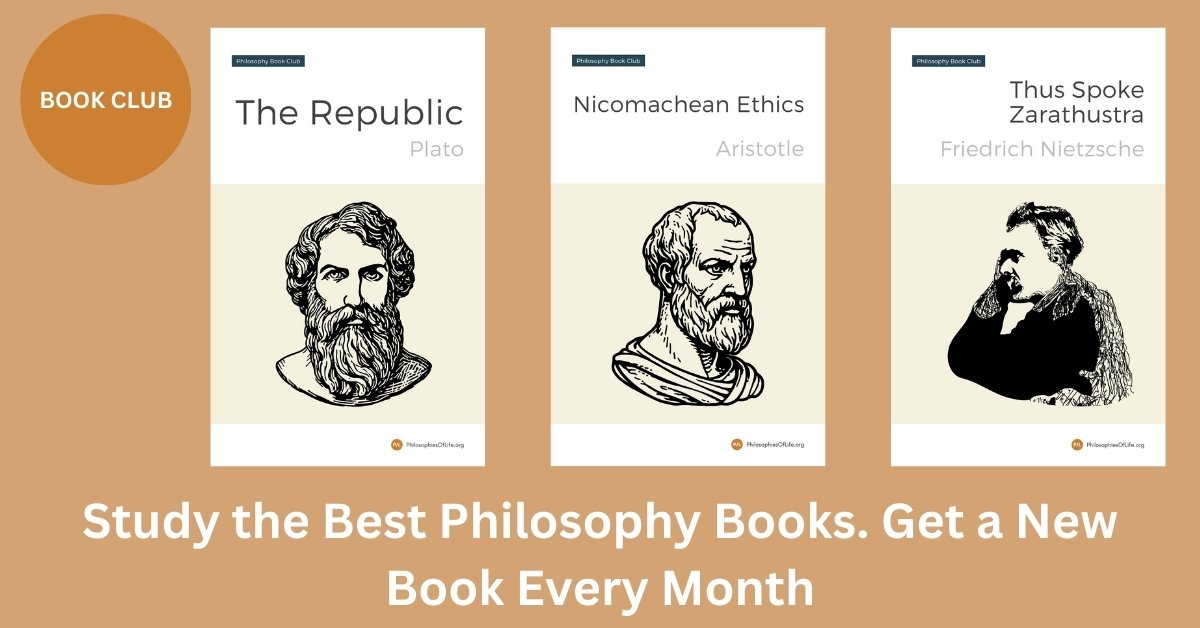Philosophy often serves as a guide for those seeking to lead a more meaningful life. However, many individuals may not fully grasp the importance of George Berkeley’s concept of subjective idealism, particularly his principle of esse est percipi—”to be is to be perceived.” Understanding this idea is crucial, as it profoundly influences how we can apply philosophy to enrich our lives. This article examines George Berkeley’s philosophy, focusing on subjective idealism and esse est percipi, and explores their significance in the philosophical quest for a more meaningful existence.
Key features of George Berkeley’s philosophy
George Berkeley, an Irish philosopher, is best known for developing the concept of immaterialism, also called subjective idealism. His philosophy centers on the idea that material objects do not exist independently of our perception of them. According to Berkeley, the physical world is made up of ideas that only exist in the minds of observers. For example, a tree exists not as a physical object but as an idea perceived by someone; if no one is observing it, it does not exist unless it is being thought of by God, the ultimate perceiver.
A key feature of Berkeley’s philosophy is his famous phrase, “to be is to be perceived” (“esse est percipi”). This means that existence is defined by being experienced or perceived. He argued that our sensory experiences—what we see, hear, and feel—are simply ideas, and there is no evidence that a physical substance underlies them.
Berkeley’s ideas were partly a response to skepticism about whether we can know anything about the external world. He believed his philosophy offered a solution by asserting that the external world is dependent on perception and God’s continuous awareness. While his views were often criticized for rejecting the notion of physical matter, they raised important questions about the nature of reality and perception, influencing later philosophical thought.
What are subjective idealism and “esse est percipi”?
George Berkeley, an Irish philosopher, is best known for his theory of subjective idealism, which posits that reality is fundamentally mental rather than physical. According to Berkeley, material objects do not exist independently of perception; instead, their existence depends on being perceived by a mind. This idea is captured in his famous phrase “esse est percipi,” which means “to be is to be perceived.”
Berkeley argued that what we consider the external world is essentially a collection of ideas and sensations in the minds of individuals. He rejected the notion of matter existing outside perception, claiming that the concept of matter is unnecessary and leads to confusion. For Berkeley, when we perceive an object, such as a tree or a chair, what we are actually experiencing is a set of ideas about that object, rather than an independent, physical entity.
To address the question of whether objects cease to exist when they are not being perceived by humans, Berkeley introduced the role of God in his philosophy. He believed that God continuously perceives everything, ensuring that objects persist even when no human mind is observing them. Thus, reality is sustained by divine perception, rendering the external world a shared experience. For Berkeley, the existence of things is rooted firmly in being perceived, emphasizing the primacy of the mind in understanding the nature of reality.
This example helps to demonstrate this philosophical perspective. Imagine a tree standing in a quiet, remote forest where no person is present to see or hear it. According to George Berkeley’s idea of subjective idealism and his famous principle “esse est percipi” (to be is to be perceived), the tree only truly exists as long as someone perceives it. Without perception, the tree’s existence would become questionable. To clarify, if a person sees the tree, hears the wind rustling through its leaves, or feels its rough bark, the tree exists in their mind as a collection of sensory experiences. However, if no perception of the tree occurs, Berkeley would argue that its existence could only persist in the mind of God, who perceives everything continuously. This outlook challenges the conventional understanding of physical objects existing independently of an observer.
Challenges to George Berkeley’s views
One of the main reasons some philosophers object to George Berkeley’s ideas is the rejection of the material world. According to Berkeley’s theory, objects only exist when they are being perceived. While he argued that this resolves philosophical issues, critics claim it creates more problems than it solves. Philosophers who favor a materialist viewpoint argue that the world around us exists independently of human perception. They find it counterintuitive to suggest that objects, like a tree or a chair, cease to exist when no one is looking at them.
Another common objection lies in the concept of shared reality. Critics question how people can agree on the common features of the world if everything depends on individual experience. For instance, two people can describe the same tree’s height, colour, and shape even if they view it from different angles or at different times. Opponents of Berkeley argue that the consistency in our shared perception suggests an external, material world, rather than a purely subjective existence.
Further challenges come from the practicality of Berkeley’s ideas. Philosophers and scientists alike point out that subjective idealism doesn’t align well with our understanding of the world through physics and other sciences. The physical laws that govern the universe—like gravity, motion, and energy—depend on the assumption of an objective reality. Dismissing the independent existence of the material world undermines the robust scientific models that have proven successful in explaining natural phenomena.
Finally, some philosophers argue that Berkeley’s views lack sufficient explanation for the origin of perceptions. If objects only exist as they are perceived, what is the nature of perceptions themselves? Critics find his explanations unsatisfactory, especially when addressing the continuity of objects or the experiences of others. These unresolved questions lead to skepticism about whether subjective idealism can provide a full and convincing account of the world.
For these reasons, Berkeley’s theory has sparked ongoing debate in philosophy, with many finding it too radical or incompatible with common sense and practical thinking.
Why subjective idealism is important to George Berkeley’s philosophy
These are some of the main reasons why grasping the concept of subjective idealism and the principle of esse est percipi is crucial for understanding George Berkeley’s philosophy.
- It highlights the role of perception in understanding reality
One of the fundamental aspects of subjective idealism is its emphasis on perception. This idea underscores that reality, as we know it, is closely tied to the way we experience it through our senses. Rather than assuming an independent, objective world detached from our minds, this philosophical approach focuses on how the human experience shapes reality. The phrase “esse est percipi,” or “to be is to be perceived,” points to the notion that objects only exist in the context of being observed or experienced by a perceiving mind. This challenges us to rethink how we conceptualize existence and emphasizes the act of perception as central to shaping our understanding of the world.
- It questions the independence of physical objects
By focusing on the connection between existence and perception, subjective idealism raises important questions about whether physical objects can have an existence outside of being perceived. This concept shifts attention away from the idea of objects possessing intrinsic properties independent of observers. Instead, it brings to light the possibility that their existence and characteristics are deeply tied to the experiences of individuals who observe them. This way of thinking invites philosophical reflection on the nature of physical reality and how our interaction with the world defines it, providing a foundation for studying the nature of knowledge and reality.
- It emphasizes the mind’s centrality in constructing reality
Subjective idealism also stresses the mind’s active role in shaping our understanding of the world around us. The idea of “esse est percipi” suggests that what we perceive and interpret directly shapes the reality we experience. This principle places importance on subjective experience, requiring us to consider how mental processes, thought patterns, and individual perspectives impact our awareness of existence. At its core, this idea encourages a closer examination of how reality is more than an external, fixed phenomenon — it is something interactive and co-created with the mind.
Contrasting George Berkeley’s philosophy with Thomas Hobbes’s philosophy
George Berkeley’s philosophy, rooted in subjective idealism and the principle “esse est percipi” (to be is to be perceived), stands in stark contrast to Thomas Hobbes’s materialism. Hobbes was a staunch advocate of the idea that all reality is physical, grounded in the tangible and measurable. For Hobbes, the material world exists independently of any perception; it operates according to mechanical laws, and human thoughts or sensations are simply the result of physical processes in the brain.
Berkeley, on the other hand, rejected the independent existence of matter. His ideas emphasized that objects only exist insofar as they are perceived by a mind. This is a fundamental departure from Hobbes’s view, as Berkeley negated the idea of a material reality existing outside of perception. Hobbes focused on the concrete and observable, tying everything back to physical matter, while Berkeley concentrated on the role of perception and the mind in constituting reality.
Ultimately, the difference lies in their approaches to understanding existence. Hobbes conceptualized a universe governed by physicality and material causation, whereas Berkeley’s philosophy is entirely grounded in the immaterial realm of perception. This distinction showcases two radically different perspectives on what underpins reality—one focused on the external and physical, the other on the internal and perceptual.
Subjective Idealism, George Berkeley’s philosophy and the meaning of life
Reflecting on George Berkeley’s philosophy and his ideas about subjective idealism, whether you agree with them or not, can have a profound effect on how you approach living a more meaningful life. While the intricacies of his views focus on how reality is perceived and understood, the broader takeaway is the encouragement to question how we interact with and interpret the world around us. This practice of reflection can enhance how we find purpose, interact with others, and make sense of our experiences.
Berkeley’s ideas prompt us to think about the role of perception in shaping our reality. Whether or not you buy into his specific arguments, considering the way your perceptions influence your understanding of the world can be a powerful exercise. It encourages you to be more mindful of how you interpret events, relationships, and challenges. This mindfulness can lead to greater self-awareness and a deeper examination of your values, helping you focus on what truly matters and aligning your actions with your personal sense of meaning.
Additionally, reflecting on such philosophies fosters intellectual humility. Philosophy often teaches us that there are multiple viewpoints about what reality is and how we fit into it, many of which are just as valid as our own. This recognition broadens our perspective, urging us to open our minds to new possibilities and ideas. By doing so, you can approach life with curiosity and an appreciation for the complexity of human experience—two qualities that enrich how meaningful life feels.
Finally, thinking about Berkeley’s ideas encourages a closer connection with others. His focus on perception can remind us that everyone sees the world differently. By understanding this, we become more empathetic and compassionate in our relationships. Acknowledging the individuality of perception can help us find common ground and build deeper, more meaningful connections, which are often some of the most fulfilling aspects of life.
In sum, whether or not you agree with George Berkeley’s view, engaging with his philosophy can inspire a more mindful and deliberate approach to life. This reflection provides tools for fostering self-awareness, intellectual curiosity, and empathy, all of which contribute to building a life filled with greater purpose and meaning.
Further reading
Berkeley, G. (1710). A Treatise Concerning the Principles of Human Knowledge. London, England.
Berkeley, G. (1734). Three Dialogues Between Hylas and Philonous. London, England.
Berman, D. (1994). George Berkeley, Alciphron in Focus. London, England: Routledge.
Foster, J. (1982). The Case for Idealism. London, England: Routledge.
Muehlmann, R. G. (1992). Berkeley’s Metaphysics: Structural, Interpretive, and Critical Essays. University Park, PA: Pennsylvania State University Press.
Pitcher, G. (1977). Berkeley. New York, NY: Routledge.
Rickless, S. (2013). Berkeley’s Argument for Idealism. Oxford, England: Oxford University Press.
Tipton, I. C. (1974). Berkeley’s Idealism. London, England: Methuen & Co.
Warnock, G. J. (1982). Berkeley. Notre Dame, IN: University of Notre Dame Press.
Winkler, K. P. (1989). Berkeley, An Interpretation. Oxford, England: Clarendon Press.


